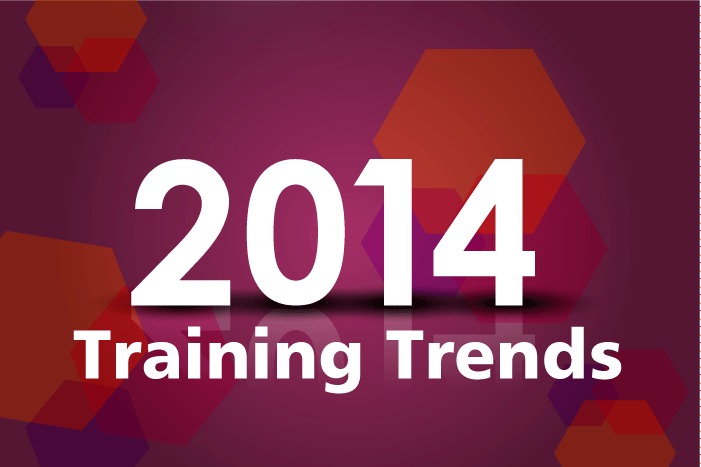
If there is a word to describe how professionals in the training industry need to approach their work in 2014, it would be “flexibility. ”What we are seeing for 2014 is a need to do more with less: less seat time and less expense,” said Leslie Ciborowski, President and Founder, TrainSmart Inc.
To succeed in meeting this challenge, Ciborowski says TrainSmart consultants will need to exercise increased flexibility in their own thinking. “Our designers and consultants need to be open and continue their education, so we are prepared for the wave of the future.”
The wave of the immediate future aka 2014 includes five key trends that will have a dramatic influence on how training is designed and delivered.
1. Generational Preferences
The Millennials are forcing designers to rethink their approach to training. For several decades training in Corporate America has followed a very prescriptive platform and a belief that learners needed to be “spoon-fed.” When providing training for something like new software, the approach was to design a class that takes participants step by step through the software. And, in fact, baby boomers still prefer this approach to training.
Millennials, however, dislike this kind of training. They don’t see the value in attending a full-day workshop or in learning steps that they don’t need right this minute. Their self-learning capability is very high. Instead of taking a step-by-step approach, the millennial wants to know how to get into the software, check out the parts they need immediately, and ignore everything else until the absolutely need to know it.
2. Mobile Technology
One reason training professionals are doing more than just listening to millennial learning preferences is that mobile technology makes it possible to deliver the training in the method that Millennials prefer.
According to Ray E. Jimenez, Ph.D., Chief Learning Officer for Vignettes Learning, “More and more companies are using mobile technologies and tablets as a way of delivering learning platforms that support learning-on-demand.” Jimenez says that mobile technology makes it possible for learners to access information as they need it on-the-job, rather than going to a formal program that takes them away from their jobs. At the same time, Jimenez says mobile technology poses some challenges. “Designers have to rethink how they design content. They cannot design content that is an hour long. With mobile technology designers have to boil it down to a few minutes to make it valuable to the busy, on-the-move, kind of learner.”
3. FLIP Learning Model
As more and more high schools and colleges adopt to the flip learning model, the approach is making its way into corporate training programs. In the FLIP learning model learners spend time prior to a workshop watching videos and/or reading material to learn about the subject matter on their own. Class time is then used to apply the knowledge by solving problems and doing practical work.
4. Immersive Learning
Mobile Technology and the FLIP learning model create an ideal environment for immersive learning.
“Our clients are asking their individual contributors to collaborate with us more in order to create immersive learning experiences,” said Leslie Ciborowski. “The information provided in the classroom must be immediately relevant to the learner’s job and our clients want to make sure we incorporate ways to test the learner’s knowledge on the spot.”
5. Videos-On -Demand
In addition to mobile technology and the Flipped classroom, the increased availability of video technology is also enabling institutions to provide learners with “smaller content.” That is certainly the approach Underwriters Laboratory is taking.
It was not that long ago that teaching testing procedures for safety and compliance programs involved detailed manuals and many class days. Today, UL is utilizing a YouTube style, just-in-time approach for many performance support situations.
“We decided to find the smartest person in the room and videotape them. The business impact is substantial. By having the videotapes instead of the manuals, we’ve reduced rework of tests and time spent in our boot camps by 50%, ”explained Greg Jenkinson, Global Training Operations Manager, UL University.
“By having one video available to all our laboratories around the world, there are no more personal interpretations of the written word. We don’t have to rely on instructors to deliver this content. As you can imagine, every instructor has their own way of doing things. Having the videos creates a standard, which results in better quality, and reduced rework for our end user, and our engineers don’t have to sit in a classroom all day. “
Ciborowski is excited about these trends. “We know we are going to be helping more people learn what they really need to go back to their offices and perform. That has been a struggle in the past where you’d attend a full-day workshop and only benefit from one-tenth of what was being taught and then forget the rest.”